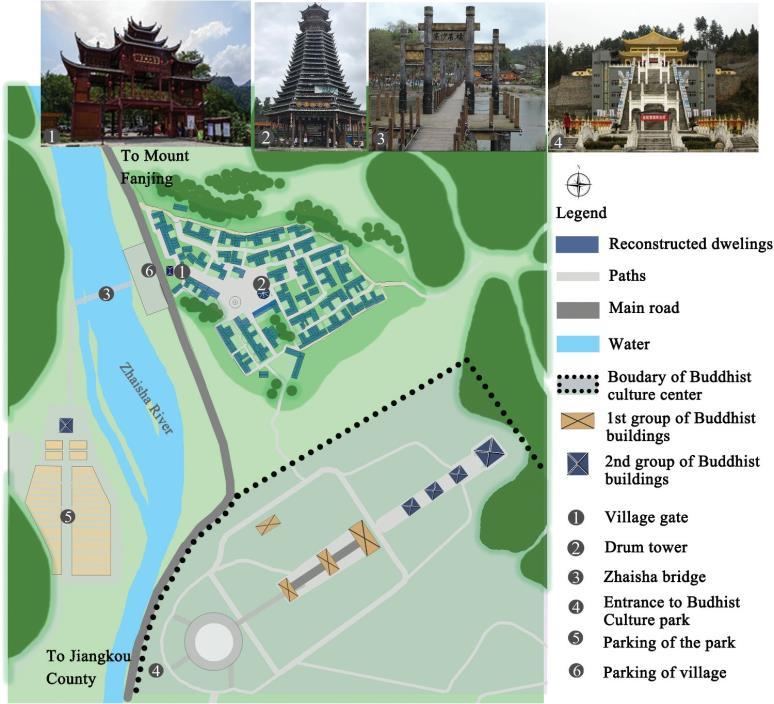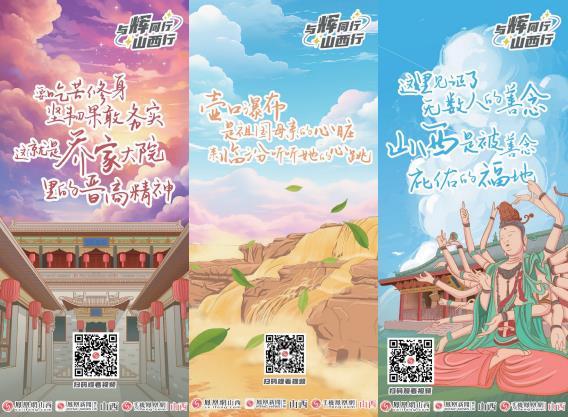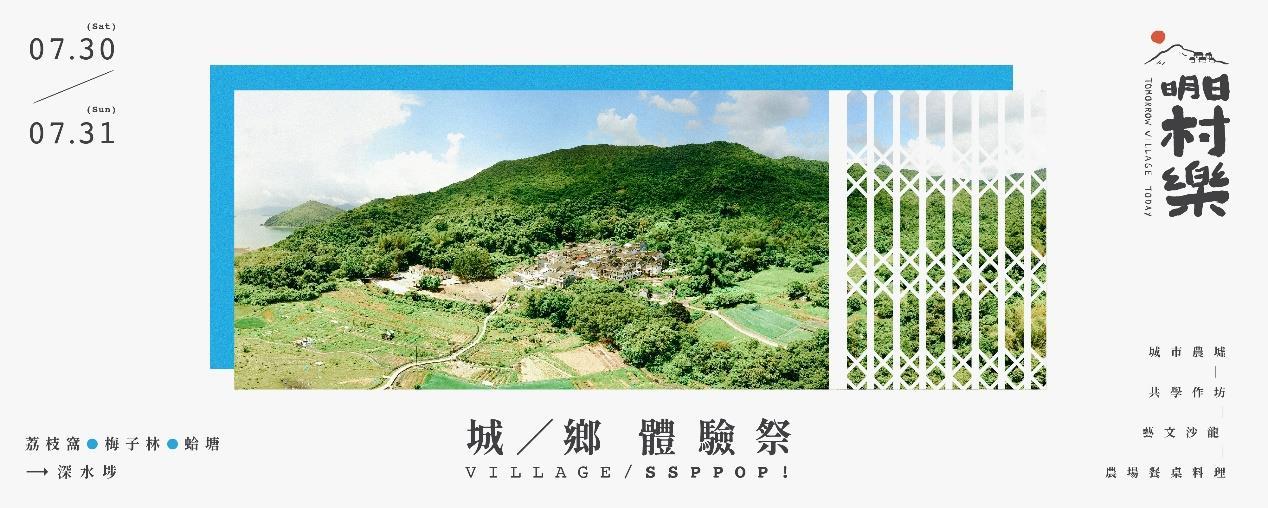1 Introduction
1.1 Research Background and Significance
Historicalvillagesarenotonlyimportantcarriersofhumancivilization,butalso truerecordsofregionalculture,architecturalstyle,traditionallifestyleand agriculturalcivilizationwisdom.Withthecontinuousaccelerationof modernizationandurbanization,manyhistoricalvillagesarefacingsevere challengesofauthenticityloss,culturaldiscontinuityandevenoverall disappearance.Drivenbymultipleforcessuchasgovernmentleadership,economic developmentandtourismcommercialization,villagepreserveionworkoften deviatesfromtheoriginalintentionofculturalinheritance,leadingtothegradual marginalizationofindigenouspeoplesandtheruptureoftraditionallifestyles, makingitdifficultforculturalheritagepreserveiontoachievelong-term sustainabledevelopment.
Againstthisbackground,communityparticipation,asaneffectivemechanismfor grassrootsgovernanceandculturalinheritance,hasbecomeincreasingly important.Thecommunityisnotonlyadirectbeneficiaryofhistoricalvillages,but alsoanimportantbuilderofculturalidentityandlocalspirit;atthesametime,by givingvillagerstherighttoparticipateindecision-making,managementandactual operations,itcanstimulateendogenouspreserveionmotivation,sothatcultural heritageisnolongeraformalityintheprocessofinheritance,butistruly integratedintothedailylifeanddevelopmentplanningoflocalresidents.Infact,
manysuccessfulcaseshaveshownthatcommunityparticipationcanformabenign interactionbetweenpreserveionanddevelopment,whichnotonlyguaranteesthe authenticityofculturalheritage,butalsopromotesthecoordinateddevelopment ofvillageeconomyandsociety.
However,inChina,theimplementationofcommunityparticipationinthe preserveionofhistoricalvillagesstillfacesmanypracticaldifficulties.Villagers generallylacksufficientvoiceandparticipationmechanisms,whichmakesit impossibleforthecommunityforcesthatcouldstimulatethevitalityof preserveiontoplayafullrole.Basedonthepracticalpainpointsofthepreserveion ofhistoricalvillagesinChina,thisstudyconstructsamulti-dimensionalanalysis frameworkof"politics-institution-culture-economy-spirit",systematicallyreveals thecomplexmechanismoflimitedcommunityparticipation,andproposes targetedstrategiesbasedontherootcausesofthedilemma.Throughcasestudies, itrefinesfeasiblepathsforcommunityempowerment,institutionalinnovation, culturalidentityreshaping,communityendogenouseconomy,andspiritualbelief return.Theresearchresultsnotonlyhelpenrichthetheoryofculturalheritage preserveion,butalsoprovidetheoreticalbasisandstrategicsuggestionsfor relevantpolicyformulationandpracticeimprovement,andhelpachievethe coordinatedgoalsof"retainingnostalgia"and"activatingthecountryside".
1.2 Research Questions and Objectives
Thisstudyfocusesonthefollowingcorequestions:
a.Whyhascommunityparticipationintheconservationofhistoricalvillagesin Chinaremainedinefficientoverthelongterm?
b.Whataretheunderlyingfactorscontributingtothispersistentchallenge?
c.WhatcanChinalearnfromstudyingsuccessfulcasesandwhatreferencepaths cantheyprovide?
Basedontheseresearchquestions,theoverallobjectivesofthisstudyare:
a.UncoveringtheCauses:Conductasystematicanalysisoftheinternallogicand rootedreasonsbehindthechallengesofcommunityparticipationinthe conservationofhistoricalvillagesinChina.
b.Casestudy:Analyzethecausesofdifficultiesandlearnfromsuccessful experiencesthroughspecificcases.
c ProposingStrategies:Developacommunityparticipationmodeltailoredto China'scontext,providingboththeoreticalinsightsandpracticalrecommendations forthesustainableconservationofhistoricalvillages.
1.3 Research Methods
Toachievetheaboveresearchobjectives,thispaperwillusethefollowingresearch methodsincombination:
a.LiteratureReview
Systematicallysortoutdomesticandforeignliteratureonhistoricalvillage preservation,communityparticipationandrelatedpolicyresearch,clarifythe theoreticalbasis,empiricalresultsandshortcomingsofpreviousresearch,and providesolidsupportforthetheoreticalconstructionofthispaper.
b.CaseAnalysis
SelectthecasesofhistoricalvillagepreservationinChinatodemonstratethe causesofthedilemma,andproposetargetedpoliciesbasedonsuccessfulpractices athomeandabroad.
c.QualitativeAnalysis
Basedonliteratureandcasedata,analyzemultidimensionalfactorssuchas politicalbackground,institutionaldesign,culturaltradition,economicmodeland localspiritmaintenancetorevealtheinternalconnectionbetweenvariousfactors andtheirimpactoncommunityparticipation.
d.
FieldResearchandInterviews
Throughon-sitevisitstosomehistoricalvillagesandinterviewswithrelevant stakeholders,obtainfirst-handinformation,furtherverifytheconclusions obtainedfromliteratureandcaseanalysis,andenrichtheempiricalcontentofthe research.
2.1 The Importance of Community Participation in Heritage Preservation
Communityparticipationisanimportantmechanismforthesustainable preservationofhistoricalvillages,andcanplayakeyroleinculturalheritage inheritance,economicdevelopment,socialgovernanceandlocalidentity.Inrecent years,scholarsgenerallybelievethatasinglegovernmentormarket-drivenmodel isdifficulttofullyguaranteetheauthenticityandvitalityofhistoricalvillages,and thedeepparticipationofthecommunitycaneffectivelymakeupforthisdeficiency andenablethevillageculturetobeinheritedforalongertimeinthecontemporary socialenvironment.
Intermsoftheinheritanceofculturalheritage,Tunbridge&Ashworthproposed theconceptof"livingheritage",emphasizingthatthedirectparticipationofthe communityisessentialforthemaintenanceofculturalauthenticity.Takingthe ancienttownsinEuropeasanexample,theypointedoutthatwhenresidentscan activelyparticipateinculturalpractices,suchastheinheritanceoftraditionalskills andtheorganizationoffestivals,thevitalityofculturalheritagewillbegreatly enhanced.Theinitiativeofthecommunityalsoplaysanimportantrolein balancingthecontradictionbetweenthepreservationofhistoricalvillagesand economicdevelopment1 .Sofieldproposedthe"communityempowerment
11 Tunbridge, J. E., & Ashworth, G. J. (1996). Dissonant Heritage: The Management of the Past as a Resource in Conflict. Wiley.
thesustainablepreservationofhistoricalvillages.Thefollowingwillreviewthe positiveprogressandexistingproblems.
BasedonthestudyoftraditionalvillagesinMentougouDistrict,Beijing,Zhao
ZhifengandXiaYuanxinusedthePSR(pressure-state-response)modeltoevaluate thehealthofthevillageculturalecosystemandfoundthattheintroductionof nationalpreservationpolicieshasplayedapositiveroleinthemaintenanceofthe villageenvironmentandculturalecology5.Inaddition,ChengYeqingetal.pointed outthatthepreservationoftraditionalvillageshasgraduallyshiftedfromsimple materialpreservationtoa"livingpreservation"model,emphasizingthe combinationofcultureandcommunityeconomicdevelopment,therebyenhancing villagers'awarenessofpreservation6 . Inaddition,WangHuaandZhengYanfen conductedacomparativestudyoftwohistoricalvillagesintheDanxiaMountain areaofGuangdongProvinceandfoundthatreasonableinstitutionalembedding can explainthedifferencesintheparticipationofdifferentruralcommunitiesin tourismdevelopment,andprovideusefulreferencesfortheempowermentactions, institutionaldesignandsupervisionandmanagementofChineserural communitiesintourismdevelopment7 错误!未找到引用源。 Althoughthe
5 ZHAO Zhifeng, XIA Yuanxin. Study on Health Evaluation of Traditional Village Cultural Ecosystem Based on PSR Model: Taking Traditional Chinese Villages in Mentougou District as an Example[J]. Development of Small Cities & Towns, 2024, 42(12): 13-19,27.
6 CHENG Ye-qing, HU Shou-geng, YANG Ren, Preservation and utilization of the traditional villages of China in the context of rural revitalization: Challenges and prospects[J]. JOURNAL OF NATURAL RESOURCES, 2024, 39(8): 1735-1759
7 WANG Hua, ZHENG Yanfen. Tourism participation of rural communities at the heritage sites in the perspective of institutional embeddedness: A comparative study of Yaotang village and Duanshi village in the
preservationofhistoricalvillagesinChinahasachievedcertainresults,insufficient communityparticipationisstillthemostprominentshortcoming.HanChengyan andGaoBingzhongfoundthatthepreservationofmanyhistoricalvillagesrelieson governmentleadership,andtheactualparticipationofcommunityresidentsislow, resultinginadisconnectbetweenpreservationpoliciesandlocalneeds,andthe villagers'recognitionofpreservationmeasuresisnothigh8 .Zuoetal.analyzedthe spatialpracticesofresidentsinHongcun,AnhuiProvince,focusingonhowtourism developmentinfluencesthetransformationoftraditionalresidentiallandscapes. Theirstudyhighlightsthatthereconstructionandcommodificationofhistoric dwellingstocatertotourismdemandsmayunderminetheauthenticityofcultural heritage.Thisfindingreflectstheconcernthatthelackofendogenouscommunity powerinheritageconservationprocessescanleadtoover-commercializationand culturalidentityerosion9 .Lietal.conductedanempiricalstudyontherelationship betweentourismdevelopmentandregionalincomeinequalityinChina,revealing thattourism-ledgrowthdoesnotnecessarilybringequitableincomedistribution tolocalcommunities.Instead,inareasheavilydependentonexternalinvestment, localresidentsoftenoccupyaweakerpositioninthetourismvaluechain,limiting theirshareofeconomicbenefits.Theoverrelianceonoutsideinvestorsinsome
Danxia Mountain[J]. 地理研究, 2016, 35(6): 1164-1176
8 韩成艳, 高丙中. (2020). 非遗社区保护的县域实践: 关键概念的理论探讨 中央民族大学学报(哲学社会科 学版)
9 Zuo, D., Li, C., Lin, M., Chen, P., & Kong, X. (2022). Tourism, residents’ agent practice and traditional residential landscapes at a cultural heritage site: The case study of Hongcun Village, China. Sustainability, 14(8), 4423.
historicalandculturalvillagesexacerbatesvillagers’disadvantageinincome distribution10 .
2.3 Summary and research gaps
Atpresent,domesticandforeignresearchmainlyfocusesontheimportanceof communityparticipationinthepreserveionofhistoricalvillages,andregardsitas themainstrategytodealwiththepreserveiondilemma.However,relevant researchinChinaismostlyfocusedonthecurrentsituationanalysisofhistorical villagepreserveionandfuturedevelopmentsuggestions,andthedeep-seated reasonsforthelimitedcommunityparticipationarerelativelyinsufficient.Ifthese fundamentalreasonsarenotanalyzedindepth,communityparticipationmaybe difficulttotrulyimplement,anditiseasytobecomeasloganexpression.
Secondly,thesinglenessoftheoreticalperspectiveandthefragmentationof analyticalframework.Mostoftheexistingdomesticresearchcutsinfromasingle dimension(especiallytourismcommercialization),andfailstoconstructa multidimensionalanalyticalframeworkcoveringpoliticalbackground,institutional contradictions,culturaltraditions,economicmodelsandlocalspirit,resultingin insufficientrecognitionofthecomplexityofthecommunityparticipationdilemma. Thestrategiesconstructedinthiswaywilllosesightofonethingwhilefocusingon another.Forexample,althoughexistingliteraturepointsoutproblemssuchas
10 Li, H., Chen, J. L., Li, G., & Goh, C. (2016). Tourism and regional income inequality: Evidence from China. Annals of Tourism Research, 58, 81–99.
3 Dilemmas of Community Participation in the Conservation of Historic Villages in China
InthepracticeofhistoricvillageconservationinChina,communityparticipation remainsapersistentbottleneck.Althoughnationalandlocalpoliciesfrequently emphasizetheimportanceof“publicparticipation”and“communitycogovernance,”communitiesoftenremaininpassive,marginalized,ormerely symbolicrolesduringactualimplementation.Tosystematicallyuncoverthe underlyingcausesofthisdilemma,thischapteradoptsafive-dimensional analyticalframework political,institutional,cultural,economic,andspiritual.It examineshowpolicyorientation,governancestructures,culturalpsychology, economicrelations,andlocalspiritualityeachcontributetothelimited effectivenessofcommunityengagement.Thefollowingsectionsexplorethese dimensionsindetail,layingthefoundationforthestrategicresponses
3.1 Political Background: Superposition of Multiple Policy Goals
InChina,especiallyinrecentinstitutionalnarratives,thepreservationofhistorical villagesisoftenincorporatedintomultiplepolicygoalssuchasenhancingsoft power,ruralmodernization,andpovertyalleviation.Thispolicysuperposition makesitdifficulttopurifypreservationwork,anditisoftenincorporatedintoa broadereconomicandpoliticalagenda,becomingsubordinatetotheabove policies.Althoughweadvocatedevelopmentinpreservation,over-emphasison developmentandprofit-drivenheritagepreservationhavebecometheessential
characteristicsofheritagepreservation,whichhasbroughtidentitycrisestomany historicalvillages.Ontheonehand,inpractice,thisdevelopmentorientationhas ledtomanyvillagesbeingover-commercializedandgraduallylosingtheiroriginal culturalbackground.Theoriginalcommunitiesaresometimesrelocated collectivelyandsometimestransformedintocompetitivebusinessrelationships. Ontheotherhand,guidedbymultiplepolicygoals,itisalsodestinedthatthe preservationofhistoricalvillagesmustbegovernment-led,whichisessentiallya top-downpreservationidea,andcommunityparticipationisdifficulttobetruly takenintoconsideration.
Forexample,XidiVillageinChinahasexperiencedatransitionfromlocal preservationtonationaltourismdevelopment.Itspreservationprocessreflectsthe dissolvingeffectofpolicygoalsoncommunityparticipation.Intheearlystageof autonomouspreservationledbythevillagecommittee(1986-1994),villagers obtaineddirectbenefitsthroughthe"tourismreceptionhousehold"system(each householdtookturnstoreceivetourists),andestablishedapreservationfund through"villagerulesandregulations".Eachhouseholdpaidpartofthetourism incomefortherepairofancientbuildings.In1994,thevillage-runcollective enterpriseXidiTourismCompanywasestablished.
However,afterthesuccessfulapplicationforWorldHeritagein2000,facingthe soaringtourismincome,thepolicygoalsquicklyexpandedtomacronarratives suchasregionaleconomicdevelopment.In2013,withthestrongcooperationof
theXidiTownGovernment,XidiTourismCompanywasrestructuredintoastateownedenterpriseunderYiCounty-HuihuangTourismDevelopment(Group)Co., Ltd.Theroleofvillagerswasdowngradedtoshoplessorsorscenicspot employees.Thevillagers'participationindecision-makingwasinnameonly,and theyweremorelikedividendbeneficiaries.Thegovernmentexpropriatedkey residentialhousesinthenameof"unifiedmanagement",andtheoriginalresidents werereplacedandresettledinnewvillages.Mostoftheexpropriatedbuildings wereconvertedintoshopsforrent,andcontrolovercommunityspacewas transferredtomarketplayers11
Figure 1 Changes of the number of business in Xidi in 2002, 2008 and 2009 (Source: 保继刚 , 林 敏慧 历史村镇的旅游商业化控制研究[J]. 地理学报 , 第69 卷)
ThecaseofXididemonstrates"plannednostalgia"-thecommunitybecomesa culturalsymbolinthepolicynarrativeratherthanasubstantiveparticipant.
3.2 Institutional Contradictions: Power imbalance and Community Aphasia
China’scurrentvillagepreservationsystemisessentiallyagovernment-enterprise alliancemanagementsystem,whichisusuallyledbythegovernmentandformsan 11 保继刚, 林敏慧 (2014) 历史村镇的旅游商业化控制研究[J]. 地理学报, 第 69 卷(第 2 期): 268-277
JiangkouCountygovernmentintroducedthe"BuddhistCulturalPark"projectin thenameofpovertyalleviationthroughtourism,andworkedwithShenzhen ZhongtianConstructionDesignCo.,Ltd.toformulateamasterplan,andpromoted overalldemolitionandreconstructionbyexpropriatingtheentirevillage'sarable land(2008-2013).Thecountygovernmentestablishedaspecialworkinggroup headedbythecountypartycommitteetoleadtheconstructionofstandardized Dongcourtyards,andestablishedthestate-controlledZhaishaTourismCompany tooperateit,investingmorethan50millionyuan(includinggovernmentpoverty alleviationfunds)tobuildthemeinnsandDongsonganddanceperformance facilities.By2013,thevillage'spercapitaannualincomehadjumpedfrom900 yuanto30,000yuan,butinreality,a"government-designenterprise-state-owned enterprise"irontriangledecision-makingsystemhadbeenformed:villagerswere forcedtojointhetourismcooperativebuthadnosay.Thecountygovernment introducedculturaltrainersfromLipingCountytoreconstructthe"Southern Dong"symboliclandscape(suchasbuildinganewdrumtowerandvillagegate)on thegroundsthat"NorthernDongcultureisnotrepresentativeenough",causing villagerstocomplainthat"policiesarealwayschanging,andwedon'tknowwhoto trust".AftertheBuddhistCulturalParkwasshutdownduetoideologicalpolicy adjustmentsin2015,thecountygovernment'sresourcesshiftedtoYunsheVillage, andZhaishabecamea"fairyvillagewithabitofstyle".
ZhaishaVillagefullypresentsthelogicalchainof"government-enterprisealliancepowerconcentration-communityaphasia".Itsplanningandimplementation
process(2007-2015)andsubsequentdeclinedirectlyconfirmthestructural problemsofpowerimbalanceandlackofcommunityparticipationinChina's villagepreservationsystem.Thisrevealstheinstrumentalizationofheritagevalue undertheleadershipofthegovernment-enterprisealliance:villagershaveno substantialparticipationinplanningandmanagement,andareonlylaborersor passivebeneficiaries.Theyhavelosttheirlandautonomyandaretrappedinan identitydilemmaduetothefictionalizationofculturalsymbols,andultimately becomepassiverecipientsofinstitutionalpowergames12
Figure 2. Comparison before and after the implementation of the plan. (Source:Qi, M. Understanding Heritage-Led Development of the Historic Villages of China: A Multi-case Study Analysis of Tongren. Hist.Environ. Policy Pract. 2021, 1–26.)
12 Qi, M. Understanding Heritage-Led Development of the Historic Villages of China: A Multi-case Study Analysis of Tongren. Hist.Environ. Policy Pract. 2021, 1–26.
3.3 Cultural Traditions: Limitations of Peasant Mentality and Lack of Cultural Identity
Fromagrassrootsperspective,China'slackofenthusiasmforcommunity participationinthepreservationofhistoricalvillagesisrelatedtothedeep-rooted culturaltraditionsofChinaforthousandsofyears.AlthoughChinahasbeenrapidly modernizing,thelimitationsofsmall-scalepeasantconsciousnessstillhaveafarreachingimpactinmanyplaces,especiallyinruralareas.Mostvillagersaremore concernedabouttheirownsmallpieceofland,ratherthanthepreservationand developmentprospectsoftheentirevillage,andbelievethatthisissomethingthe governmentshouldworryabout.Theybelievethatvillagecadresareoftenthe executorsofnationalpoliciesratherthanrepresentativesofcommunityinterests. Villagershavelowtrustincadresanddonotbelieveintheirownvoice,which makesitdifficulttostimulatetheenthusiasmofcommunityparticipation.
Ontheotherhand,undertheinfluenceofthousandsofyearsofConfucianculture inChina,thepublic'sculturalidentitymayhaveagreatsenseoffamilyandcountry, thatis,recognizingtheiridentityas"Chinese",evenifthescopeisnarrowed,itwill bearegionalidentity(forexample,definedbyprovince).Butitisdifficultfor villagestoformculturalidentitytobecometheinternaldrivingforcefor communityparticipation.
Forexample,duringmyfieldresearchinShanxi,IfoundthatFoguangTempleand NanchanTempleinWutaiCountyaretheearliestexistingTangDynastywooden
toknowmore.TheresearchonthepreservationofFoguangTempleandNanchan Templeprofoundlyreflectsthebinarydivisionof"culturalelites-villagers".
Figure 5 Shanxi - "Five Thousand Years Are Far Away, Shanxi Is Very Close" Provincial Cultural Tourism Brand Communication ( Source: https://h5.ifeng.com/c/vivoArticle/v002b8_Nb2dBGWuGZIPBVscipsOOkxb2o fC0Eovs00QlXQ__?isNews=1&showComments=0) Hist.Environ. Policy Pract. 2021, 1–26.
3.4 Economic Models: Capital Dominance under Tourism Commercialization
Inthedevelopmentofhistoricalvillagescenicspots,theproductsandcontentof ruraltourismarebecomingmoreandmoreabundant.Butitsunderlyingcoloris stillthatcapitalbringsurbanpeople'spursuitoflifeandconsumptiontastetothe countryside.Inmostcases,villagesbecomecommoditiesforurbanusersto developthetertiaryindustryinruralareas,andtheoriginalcommunitiesbecome passiverecipientsofcapital.Thepreservationanddevelopmentofvillagesare essentiallydrivenbyexternalforcesratherthanactiveparticipation.
Ontheotherhand,capitaloftencomesfromtheoutsideworldanddoesnot understandthecultureandvalueofthehistoricalvillagesthemselves.Tourismis
alwayspursuing"curiosity"and"freshness".Inordertomaximizetourismincome, "firstspreadrumors,thenbuildtemples".Aslongastouristscanspendmoney, theycaninviteforeigngodsandletvillagersperformotherpeople'sfolkcustoms, butsmashanddemolishtheirownunknownlocalspiritualbeliefsandtraditional customs.Intheheartsofvillagers,thesecustomsaretheperformanceofcultural heritage,orevenfakeheritage,whichnaturallycannotarouseresonance,andthe community'senthusiasmforparticipationisevenlower.
Forexample,thetourismdevelopmentoftheTujiavillageofYunsheinGuizhou Province,China,profoundlyrevealsthelogicofthecommercializationofrural heritageunderthedominanceofexternalcapital.In2013,duringthecounterpart supportofJiangkouCountybyGusuDistrictofSuzhouCity,awell-knownplanning anddesigninstituteofSuzhouCitywasintroducedtoreconstructthevillagespace withthe"SuzhouAncientCityModel":3.8kilometersofmainroadswere hardened,280houseridgeswererenovated(withJiangnanstyledecorations), traditionalpapermakingworkshopsweretransformedinto"paperartexperience areas",and16.4millionyuanwasinvestedintheconstructionofantiquevillage gatesquares.Inordertoenhancethetourismappeal,thecountygovernment fabricatedaculturalnarrative-claimingthat"Yunshe"means"theplacewhere goldenmonkeysdrinkwater"inTujialanguage(echoingtheecologicalIPof FanjingMountain),whilethevillagersbluntlysaidthatthenameisactually "dormitoryintheclouds"andhasnothingtodowithhistory.By2015,urban leisurefacilitiessuchas"waterpark"and"flowersea"wereaddedtomeetthe
"leisureandentertainment"needsofurbantourists.Farmhousesandpaperart experiencestoresareconcentratedalongthemainroadstoforma"scenic" consumptioncorridor.
Ontheonehand,thiscapital-driven"curiosity"renovationplandidnotseekthe opinionsofthevillagersthroughouttheprocess.Asthevillagerssaidbluntly: "Those'experts'knownothingaboutourculture,butarrogantlyrefusetoask."The villagersparticipatedasconstructionlabor(suchashardeningtheroad),orcould onlysharemeagerprofitsbyoperatinglow-endhomestays.Evenmoreoutrageous isthatthecostofhousingrepair(2000-200,000yuan)isbornebythefamilyitself, andthenewresidentialareapromisedbythegovernmenthasbeenshelved indefinitelyduetodisputesoverdevelopers'profits.Ontheotherhand,cultural practiceshavebeensimplifiedintotouristperformanceprojects,andthevillagers satirizedthat"thedancesdesignedbyexpertsarecompletelydifferentfromthose passeddownbyourancestors."TheYunshecasetypicallypresentsthe "commodification"logicofruralheritageunderthedominanceofexternalcapitalreshapingruralspacewithurbanconsumptionneedsandcreatingtourist attractionsthroughfictitiousculturalnarratives.Thevillagerslosetheirrightto culturalinterpretationinthe"designed"heritagescene.Theycanneitheridentify withtheimposedsymbolsystemnorrelyonthetourismeconomytosurvive, becomingpassivecarriersofspatialcommodification13 .
13 Qi, M. Understanding Heritage-Led Development of the Historic Villages of China: A Multi-case Study
preservationofhistoricalvillages.Thedifficultyinmaintaininglocalspirithasnot onlyweakenedtheculturalidentityandcohesionofthecommunity,butalso weakenedtheresidents'inherentmotivationforvillagepreservation,thusaffecting theiractiveparticipationintheheritagepreservationprocess.
Forexample,thedilemmaofintangibleculturalheritagepreservationinHanxin Village,YuduCounty,JiangxiProvince,showsthedissolvingeffectofthelocal spiritualruptureoncommunityparticipation.Thevillagewasselectedintothe secondbatchofChinesetraditionalvillagesin2013.Ithastwonationalintangible culturalheritages(YuduXialingGongpoChui,Hakkaancienttexts)andfive provincialandmunicipalintangibleculturalheritages(teabasketlanterns,Hakka tea,etc.),butitfacesthreeculturalruptures:first,theinstrumentalizationof traditionalrituals-theintangibleculturalheritagetrainingcenterestablishedin 2018simplifiedthedragonboatsacrificeintoatourismperformance.Thevillagers saidfranklythat"onlytheperformanceformisleft,andthemoodofprayingfor godshaslongbeengone";second,theintergenerationalinheritancefault-only37 peopleoutof451householdsinthevillageparticipatedintheintangiblecultural heritageperformanceteam,withanaverageageof58yearsold,andtherehas beenonlyoneyoungapprenticeintheHakkahooktubemakingtechniqueinthe pastfiveyears;third,thedivisionofcommunityinterests-in2018,thevillage tourismcooperativeraised3millionyuantodevelopintangibleculturalheritage tourism,but75poorhouseholdsdidnotreceivedividends,triggeringproteststhat "publicresourcesaremonopolizedbytourismpractitioners."This"government-
enterprisepartialprofitsymbiosis"modelhasledtotheintangiblecultural heritagebecomingatoolforgeneratingincome.Villagershavelosttheirrightto interpretcultureandhaveformedautilitarianmentalityof"performingonlywhen paid",whichconfirmstheviciouscycleoftheruptureoflocalspiritandthe inabilityofcommunityparticipation14 .
Figure 7. Diagram of the symbiotic relationship of traditional village intangible heritage in Hanxin Village(Source:Lu, J., & Liu, A. (2023). A symbiosis model for the development of intangible cultural heritage in traditional villages: Take Hanxin Village in Jiangxi Province as an example. 资源科学 , 45(7), 1396–1409.)
Theabovecaseshowsthatthedilemmaofcommunityparticipationinthe preservationofChinesehistoricalvillagesisnotonlyduetothedisappearanceof physicalspace,butmorefundamentally,thedisappearanceofcommonbeliefsand intangibleculturalheritagepractices.Commonbeliefsandintangiblecultural heritagecarrythelocalspirit,andwhenthe"localspirit"isbroken,community
14 Lu, J., & Liu, A. (2023). A symbiosis model for the development of intangible cultural heritage in traditional villages: Take Hanxin Village in Jiangxi Province as an example. 资源科学, 45(7), 1396–1409.
participationlosesthefoundationofculturalidentityandbecomesasourceless water-itisnotthatresidentsareunwillingtoparticipate,butthatthespiritual corethatcanbeusedtogatherconsensusonparticipationhaslongbeendissolved.
"traditionalbuildinggrouppreservationarea"since1976,andwaslaterincluded intheWorldHeritageListin1995.Itspreserveionscopeiscompletelyconsistent withtheoriginalnationaldesignatedpreserveionarea,andthedevelopment boundaryhasnotbeenexpandedduetotheworldheritage,whichensuresthecore positionofheritagepreserveionfromalegalperspective.Thelocalpreservation planstipulatesthatallenvironmentalelementsincludinghouses,canals,farmland, etc.mustbepreserveedasawhole,andanychangesmustbereviewedand approvedtopreventconservationworkfrombeingsqueezedoutbyeconomic interests15
4.1.2 Distinguish the management process of preserveion and development
Developspecialmanagementdepartmentsandplanningprocessesfordifferent goalstoprevent"developmentfromsuppressingpreserveion".Itisalsonecessary tobuildacommunicationandcoordinationplatformwhilemaintainingthe independenceofthetwo,andstrivetodevelopinpreserveion.
Ogimachi,Shirakawa–muraavoids"twoskins"orconfusionofgoalsbyseparately planningthemanagementprocessofpreserveionanddevelopmentgoals.Cultural heritagepreserveionisledbytheMinistryofCultureinaccordancewiththe "PreservationPlan",focusingonthemaintenanceoftheoriginalappearanceof buildingsandenvironment;tourismdevelopmenthasaseparatetourism
15 Takamitsu Jimura. “The Impact of World Heritage Site Designation on Local Communities: A Case Study of Ogimachi, Shirakawa-mura, Japan.” Tourism Management 32, no. 2 (2011): 288–296.
managementplan,whichisimplementedbylocalgovernmentsandcommunity organizationsinconsultationtoachieve"layeredmanagementofpreserveionand developmentandcoordinatedpromotion.Althoughthenumberoftouristshas increasedsharplyafterbeingselectedasaheritagesite,nolarge-scalenew commercialfacilitieshavebeenbuiltinthearea,andaccommodationand receptionarebasicallyoperatedbyresidents,maintainingtheoriginalvillage structureandcommunitydominance.Thismanagementprocessofseparate planningandmutualcoordinationhelpstoensurethatdevelopmentactivitiesdo notunderminetheoriginalintentionofpreserveion,andcanachievedevelopment througheffectivecontrolandplanning.
4.1.3 Policy guarantee for community participation
Incorporatecommunityparticipationintothepolicyformulationandapproval process,establishformalgovernanceunitssuchastheCulturalHeritage PreservationAssociationandtheCommunityParticipationCommittee.Policies shouldnotonlyfocusonthetop-downtargetperspective,butalsofromthe bottom-upperspective,totrulyguaranteethatresidentshaveasustainedand stablevoiceandsupervisionrights.
ThecaseofOgimachi,Shirakawa–murahighlightsthedeepembeddingof communityparticipationinpolicy.Traditionally,thevillageorganization(Kumi) andmutuallaborpractices(Yui)inShirakawa-gohavealwaysbeenthebasisof locallife.Thisinternalcollaborationmechanismhasbeencontinuedinheritage
preserveion:villagersuseKumiandYuitohelpeachothercompleteregular maintenanceofthatchedroofsandothertasks.Thistraditionalparticipationmodel waslaterinstitutionalizedintothemodernpreserveionsystem.Asearlyas1971, theresidentsofOgimachiestablishedtheNaturalEnvironmentPreserveion Association(laterdevelopedintotheHeritagePreservationAssociation).The establishmentandpurposeofthisnon-governmentalorganizationwere recognizedbythelocalgovernmentandtheNationalCulturalAgency,andbecame animportantbasisfortheformulationoftheofficialpreservationplaninthe 1970s.Throughthepreservationmeeting,thecommunityhasaformalsayin heritagepreserveiondecisions,andcommunityparticipationhasbeenstably embeddedinthepolicyprocess.Atthesametime,thepreservationplanitselfalso includeseveryhouseholdasaresponsiblesubject,requiringhomeownerstobe responsibleforthepreservationoftheirownhistoricalbuildings.Thegovernment providestechnicalandfinancialsupporttoresidentswhofulfilltheirmaintenance obligations.Atthesametime,localgovernmentscontroltourismpopularityby promotingthe"transferparkingsystem"andrestrictingvehicleaccess,soasto avoidoverdevelopmentaffectingthedailylifeofthecommunity.Abenign mechanismcombiningresidents'initiativewithpublicpolicysupporthasbeen formedhere,whichhasgreatlystimulatedthesenseofownershipofcommunity participationinpreserveion.
community.
4.2.1 Clear role positioning and division of rights and responsibilities
Firstofall,thefunctionalboundariesandresponsibilityallocationofthe government,enterprisesandcsommunitiesshouldbeclarifiedattheinstitutional leveltopreventresourcetiltandissuemonopolycausedbyunclearrightsand responsibilities.Thegovernmentshouldassumetheresponsibilityofinstitutional designandpolicysupport,enterprisesshouldparticipateintheimplementationof projectsasserviceandtechnicalsupportparties,andthecommunityshouldbethe subjectofculturalinheritanceandsocialpractice,leadingtheidentification, expressionandtransformationoflocalresources.Atthesametime,athird-party independentevaluationagencyshouldbeestablishedtoconductregularreview andfeedbackontheprojectoperationprocessandcooperationresultstoensure thatthebehaviorofallpartiesisdynamicallycorrectedunderinstitutional constraintsandtopreventpowerabuseorresourceimbalance.
Forexample,LaiChiWoVillageinHongKonghasimplementedadevelopment modelbasedontheconceptof"co-creationofcommunity"inthe"HSBCRural MutualAssistanceProgram"and"HSBCRuralSustainableDevelopment"seriesof projects.Theprojectisapprovedbythegovernment,andtheHongKongand ShanghaiBankingCorporationLimitedprovidesfundingandorganizational coordination.Here,neitherthegovernmentnortheenterprisedominatesthe developmentbutaimstomobilizelocalcommunityactionsthroughthesocio-
economicmodel.Byinvitingartists,expertsandlocalresidentstojointlycarryout farmlandrevitalization,artinstallations,culturalrecordsandotheractivities,we reshapetraditionalruralcapitalandrevitalizethecommunity'seconomicand socialvitality.Inthisprocess,localvillagersparticipateinallaspectsoftheproject asconsultants,workpartners,teachersandinformationproviders.This mechanismbreaksthetraditionallogicofunilateraldominancebyenterprisesor externalcapitalandrebuildstheconnectionandautonomybetweenthe communityandpolicy16
4.2.2 Establish an Equitable and Co-Creative Collaboration Mechanism
Secondly,a"co-creationplatform"withdiverseformsandstablemechanisms shouldbebuilttofacilitateequaldialogueandcollectivedecision-makingamong thethreepartiesinthesameconsultationstructure.Intermsofsystem,itis possibletopromotetheestablishmentofa"cooperationcommittee"or"cocreationparliament"composedofthegovernment,enterprises,community organizationsandexternalexpertstoensuretherepresentationofthecommunity indecision-makinganditsrealrighttoparticipateinkeylinkssuchasproject planning,resourceallocationandstrategyrevision.Atthesametime,an informationflowmechanismcombiningonlineandofflineshouldbeestablishedto breakdowninformationbarriersthroughworkshops,communityseminars,
16 Policy for Sustainability Lab. “About the Programme – Rural Sustainability.” https://ccsg.hku.hk/ruralsd/en/pages/about-the-programme/
Figure 10. Co-creation of the community action model
(Source:https://ccsg.hku.hk/ruralsd/en/pages/co-creation/approach/)
Figure 11 Co-creation of the Village Fest 2022(Source:https://ccsg.hku.hk/ruralsd/en/pages/cocreation/village-fest-2022/)
Thiscaseshowsthatreasonablepowerreconstructionhassuccessfullybroken awayfromthepreviouspassivepatternofgovernment-led,enterprise-executed, andcommunity-coordinated.Takingthecommunityastherealinstitutional subjectandturningtoanewcooperationmodelof"multi-co-construction"can greatlystimulatethecommunity'sinternalvitalityandenthusiasmfor participation.Withthiscollaborativecooperationmodel,thecommunitycannot onlypreserveandinherittraditionalculture,butalsoachieveself-renewaland
sustainabledevelopmentintheprocessofmodernization,providingareplicable andsustainablemodelforsimilarregions.
4.3 Establish Localized Cultural Education and Expression Mechanisms
Comparedwiththerigidguaranteesatthepolicyandinstitutionallevels,thedeep motivationforcommunityparticipationmuststartfromthesubjectofcommunity participation,the"villagers".Invillagesdominatedbysmallholderconsciousness andfadingculturalidentity,itisurgenttoreconstructthecommunity'ssubject consciousnessthrougha"localized"culturaleducationsystem,strengthen residents'understanding,recognitionandinheritanceresponsibilityoftheirown culture,andfundamentallyawakentheirinitiativeandpersistenceasparticipants inheritagepreserveion.
4.3.1
Establish community cultural archives
Takingvillagersastheleader,systematicallysortingoutthevillage'shistorical memoryanddailylifehistoryisthefirststepinrestoringculturalidentity. Specifically,itcanincludeorganizingvillagerstoparticipateinoralhistory recording,collectingoldobjects,andsortingoutancientbuildingrepairlogs,soas totransformscatteredprivatememoriesintosharedculturalarchivesandbuilda cognitivefoundationforcollectivememory.
WheninvestigatingthePrayaLanecommunityinMalacca,the"StoriesofPraya Lane"exhibitionprojectwaslaunchedwiththisconcept.Communityresidents,
volunteersandculturalinstitutionscooperatedtorecordthelifestoriesofthe Chinese,Malays,IndiansandChristiangroupswhooncelivedhere.Thecontent coversdetailsofculturallifesuchasfestivalvisits,neighborhoodmutual assistance,andcraftinheritance,andisfinallycompiledintoapermanent exhibition,whichistoldbyresidentstovisitors.Theoriginalbuildingsareusedto setuptraditionalgrocerystores,residentialsettings,storycornersandother displayspacestocreatea"memorylandscape"communityarchive.Thisapproach notonlyrebuildstheresidents'senseofhistoricalpride,butalsoallowsoutside visitorstodeeplyunderstandthediversityanddepthoflocalculture.
4.3.2
Integrate into the local education system
Promotingthesystematicentryofvillagecultureintolocalschooleducation, communitytrainingandexperientiallearningactivitiesisthekeytoenhancingthe culturalidentityandparticipationawarenessofthenextgeneration.The"two-way teaching+co-constructioncurriculum"modelcanbeadopted.Ontheonehand, localhistoryandtraditionalcultureareincorporatedintothelocalcurriculum system,andontheotherhand,villagersaretransformedintoknowledge disseminatorsandculturalpractitionersthroughactivitiessuchas"ancient buildingopenday","culturalhandmadeclass"and"farmingfestival".
IntheextendededucationprojectofPrayaLane,thecommunitycooperatedwith localschoolstodesignthe"CommunityCulturalDay"activity:olderresidentsled studentstovisittheexhibition,tellchildhoodstories,andcooperatewith
sceneofchildrenrunningeverytimethechurchbellsrang.Asrealexperiencers, thevillagers'storiesareoftenmorevividandinfectious.Thevillagersalso organizedteachingoflocaltraditionalsongsanddancesandpineapplepie workshops,aswellaspostinghistoricalpicturesandtellingmemoriesofold villagelifethroughFacebook,andevencooperatingwithinstitutionstocompile brochuresfordistributiononthedayoftheevent.This"returnofexpression" mechanismhasenhancedthevillagers'trustintheirownrighttospeak,andhas alsogreatlyactivatedtheenthusiasmforcommunityparticipationatthelevelof culturalidentity.
Figure 12 Praya Lane Village Archives Story Gallery (Source:By author)
Figure 13 Praya Lane villager was telling their stories (Source:By author)
Figure 14 Praya Lane traditional dance workshop (Source:By author)
Thiscaseshowsthatsystematiclocalculturaleducationcannotonlyfillthe cognitivegap,butalsoisthecoremechanismconnecting"localidentityparticipationbehavior".Frompassiveknowledgetoactivenarration,fromvisitors toculturalcurators,communityidentityisconstantlyrebuiltinculturalpractice, andthemotivationforparticipationhasthereforegainedastableculturalidentity foundation.IfChinesehistoricalvillageswanttobreakoutofthecycleof"project dependence-participationfailure",theymustalsouselocalizededucationtoenable villagerstobreakthroughthelimitationsofsmallpeasantconsciousnessandthe lackofvillageculturalidentity,sothattheycantrulymovefrom"bystanders"to "guardians".
4.4
Develop Community-Led Endogenous Economies
Inviewofthefactthathistoricalvillagesaregenerallytrappedinthedilemmaof "capitaldominance-culturalcuriosity-villagemarginalization"intourism development,weshouldabandonthesingletertiaryindustryorientationand performativeconsumptionpath,andbuildadiversifiedandendogenouseconomic structuredominatedbythecommunityandbasedonculturalbackground. Preserveiondoesnotmeanstagnationandrestrictionofdevelopment,butshould returntodevelopmentbasedonlocalizationbyembeddinglocallogic,retaining authenticitywhilerealizingtherevitalizationofheritage,andultimatelypromoting awin-winsituationofvillageeconomicrevitalizationandheritagepreserveion.
4.4.1 Systematic background intensive reading and resource inventory
Thefirststepincommunity-ledeconomicdevelopmentistoconducta comprehensiveandin-depthinventoryandsortingofvillageheritageand resourcesthroughin-depthinterviewswithvillagersandhiringexperts.Thisisthe basisforpreserveionandutilization.Ontheonehand,itcanavoidunconscious heritagedestruction,andontheotherhand,itcanassesswhichonesaresuitable forrevitalizationanddevelopmentbasedonthebackground.
Forexample,Xixinan,AnhuiProvince,prioritizesthesortingofvillageheritage resources,mainlyincludingfourcategories:waterconservancy,gardens, architecture,andintangibleculturalheritage,andthensetspreserveion regulationstoavoidunconsciousheritagedestruction,andrevitalizesandutilizes themonthisbasis.Specifically,itincludesusingidlegraindepotsandprimary schools,firstopeningthe"NativeAcademy",carryingoutinternationalruraldesign talenttraining,andintroducingnewcreativeindustryculture;retainingtheFengle RiverWaterConservancyHeritageCorridortolimitdevelopment,preservingthe Fengshuiforestbelievedbyvillagers,andformingforesthabitats;designingtourist routesandculturalinterpretationsystemstodrivesightseeingtourismandservice industries;usingintangibleculturalheritagetocreateculturalandcreative industries.Throughthisresourceidentificationbasedonheritagebackground,the communityhasclarifiedthedirectionofsustainableuseandalsoguaranteedthe rationalityandauthenticityofthedevelopmentproject.
toattracttouriststoparticipatewhileretainingtheoriginallivelihoodandcultural rhythmofvillagers.Thevillagestillretainsthestructureofarablelandand agriculturalandforestryland,avoidingthelivelihooddisruptioncausedbythe occupationoffarmlandbytourismrealestatedevelopment,andalsoprovidesa modelfortherestorationofnon-tourismruralvalues19 .
4.4.3 Build a cultural-industry multi-integration platform
Inordertogetridofthepassiveconsumptionchaincenteredontourists,the communityeconomicsystemshouldtakelocalcultureasthecoreresource, developintegratedeconomysuchasculturalcreativity,education,design,and agriculturaltechnology,andachieveeconomicsustainabilityandcultural resonanceonthebasisof"non-performance",andexpandtheeconomic boundariesofnon-scenicareas.
The"NativeAcademy"establishedinXixinanasa"catalyst"ofculturalindustrynot onlycarriesthefunctionsofheritagepreserveioneducation,localresearchand internationalexchange,butalsobuildstheconnectionpointbetweenlocal knowledgeandglobalresourcesthroughartexhibitions,handicraftworkshops, andchildren'sruralcourses.Culturalactivitiesplannedbytheacademy,suchas "NewYearPigDinner","SendingSpringFestivalCouplets",and"RevisitingLiu Dunzhen'sRoad",havemadevillagersbecomeorganizersoffestivalceremonies
19 Pinyu Chen and Xiang Kong. “Tourism-Led Commodification of Place and Rural Transformation Development: A Case Study of Xixinan Village, Huangshan, China.” Land 11, no. 12 (2022): 2180.
andpublicspacesagain,ratherthanperformers.
Atthesametime,Xixinan'screativeindustrygroupwiththecharacteristicsof "culture+design+service"transformsheritageutilizationintoculturalcontent productionratherthansimple"consumption",effectivelyavoidingthepseudoculturalnarrativelogicundertheguidanceoftourism,andrealizingthevillagers' re-masteryofculturalexpressionrightsandidentityconstructionrights20 .
Figure 16 Catalyst Activation: Xixi Nan Chronicle (Source:Yu, Kongjian. 2017. “New Ruralism Movement in China and Its Impacts on Protection and Revitalization of Heritage Villages: Xixinan Experiment in Huizhou District, Anhui Province.)
20 Yu, Kongjian. 2017. “New Ruralism Movement in China and Its Impacts on Protection and Revitalization of Heritage Villages: Xixinan Experiment in Huizhou District, Anhui Province.” Bulletin of Chinese Academy of Sciences 32 (7): Article 4.
ThiscaseshowsthatXixiSouthVillagehassuccessfullyweakenedthelogicofthe scenicspotbycomprehensivelysortingoutheritageresources,restoringthe agriculturalcraftfoundation,anddrivingtheculturalindustry,andhasbuiltan endogenouseconomicrevitalizationpath,becomingatypicalcaseofChina's responsetothedilemmaoftourismcommercializationandcapitaldominance.The villageeconomyisnolongerpassivelyadjustedaroundtouristdemand,but reconstructedaroundtheinternallogicof"localvalue",whichnotonlyachieves economicrevitalization,butalsorestorestheculturalconfidenceandsovereignty ofthecommunity.ThisisinsharpcontrasttoYunshe'sdilemmamentionedabove.
4.5 Revitalize Ritual Practices and Intangible Heritage Transmission
Undertheimpactofurbanizationandspatialdemolition,thematerialheritageof somehistoricalvillageshasgraduallywithered,butthedeepercrisisisthe disintegrationofspiritualties.ThedilemmarepresentedbyHanxinVillageshows thattheperformanceofintangibleculturalheritage,theinstrumentalizationof ritualsandthegenerationalrupturehavemadethe"localspirit"existinnameonly, thevillagershavelosttheircommonbeliefsandemotionalidentity,andthe communityparticipationhasnaturallylostitsfoundation.Toreversethisvicious cycleof"spiritualrootlessness-participationdisability",itisnecessarytorebuild thespiritualsystemthatsupportsthevillagecommunity,sothatbeliefritualsand intangibleculturalheritageinheritancecanonceagainbecometheendogenous drivingforceforgatheringvillagersandstimulatingparticipation.
community,exorcisingdisasters,andexpressingpeople'slongingforabetterlife. Thissymbolizesthecommunity'scontinuedmaintenanceofthe"oldvillage spiritualbelief"21 .
(Source:https://thelongnwindingroad.wordpress.com/tag/mun-san-fook-tuck-chee/)
4.5.2 Construct intergenerational learning and incentive mechanisms
Intheprocessofintergenerationaltransmission,intangibleculturalheritageoften fallsintothecrisisof"oldergenerationstruggling-youngpeoplefleeing-cultural interruption",especiallywhenmoderneducationandconsumptionstructureare seriouslyoutoftouchwiththerecognitionoflocalskills.Inthisregard,the intangibleculturalheritageco-learningmechanismshouldbeconstructedfromthe threedimensionsof"skills-life-value":first,incorporateintangiblecultural heritageintothevillageschooleducationsystem,suchaswintervacationclasses andcredit-basedcraftcourses;second,design"parent-childcollaborative"craft workshops,holdfamilycompetitionsregularly,andintegratelearningintofamily
21 Ang: Y.H.(2016).乡情祠韵: 沙冈村和万山福德祠的流变与传承=A Kampong and lts Temple: Change and Tradition in Kampong Sar Kong and the Mun San Fook Tuck Chee. SELAT SOCIETY.
Figure 17. "fire dragon" traditional rituals
dailylife;third,establisha"youthinheritancerewardfund"tostabilizethe sustainabilityofyoungpeople'sparticipationininheritancefromaninstitutional andeconomicperspective.
TheintergenerationalcontinuationofthefiredragonceremonyinShagangVillage alsobenefitsfromthis.Theproductionofthefiredragon,gonganddrumtraining, andtheritualprocessinfrontofthetempleareallcompletedbyvillagersof differentages.Thethreegenerationsofold,middle-agedandyoungpeoplepasson skillsandbeliefsinpractice.Thesportsclubnexttothetemplewaslater transformedintoaliondanceteamandisstillactivetoday,becomingadaily activityplatform.Alltheseprovideanon-institutionalizedbuthighlystickysoilfor thecontinuityof"faith-life-skills".
(Source:https://www.straitstimes.com/singapore/living-city-dance-of-the-fire-dragon)
Thiscaseillustratesthatwhentheauthorityoverritualpracticesandintangible heritageisreturnedtothecommunity,localspiritualitybecomesmorethana symbolicslogan itevolvesintoalivingemotionalbondthatconnectsindividuals totheircollectiveidentityandsharedmemory.Byactivatingintergenerational collaborationandinformaltransmissionmechanisms,thecommunitynotonly
Figure 18. Fire Dragon intergenerational learning and inheritance
reclaimsitsculturalagencybutalsoestablishesadeep-rootedsenseofbelonging andsustainedmotivationforheritageparticipation.Thisinternalcycle linking ritual,belief,andparticipation offersaculturallygroundedpathwayto overcomingthedisengagementoflocalcommunitiesinheritageconservation.
5 Conclusion
ThedilemmaofcommunityparticipationinthepreserveionofChina'shistorical villagesisessentiallytheresultofthelackofgovernancemechanismsandcultural soil.Thisarticlesystematicallyrevealsthecomplexrootsoflimitedcommunity participationthroughthemulti-dimensionalanalysisframeworkof"politicsinstitution-culture-economy-spirit".Thestudyfoundthatthesuperpositionof multiplepolicygoalshasalienatedpreserveionworkintoanappendageof developmentgoals;thepowerimbalanceoftheinstitutionalstructurehasledto themarginalizationofthecommunityindecision-making;thelackofsmallpeasant consciousnessandculturalidentityhasweakenedtheendogenousmotivationof villagerstoparticipate;capital-ledtourismcommercializationhaserodedthe authenticityofculturalheritage;andthedisappearanceofcommonbeliefsand intangibleculturalheritagehasdisintegratedthespiritualfoundationof communitycohesion.Thesefactorsareintertwined,formingaviciouscycleof inefficientcommunityparticipation.
Inresponsetotheabovedilemma,thispaperstudiesexcellentcasesathomeand abroad,includingOgimachiinShirakawa-go,LaiChiWoinHongKong,PrayaLane inMalaysia,XixinaninAnhui,China,andShagangVillageinSingapore,drawson successfulexperiences,andproposesfivecomplementarycountermeasures: buildingapolicystratificationmechanismtoclarifytheprincipleofpreserveion priority;reconstructingthepowerrelationshipbetweenthe"government,society
regionalcomparisonsandcarryoutmorein-depthandcomprehensiveresearch.
Inshort,thepreserveionandrevitalizationofhistoricalvillagesultimatelyreturn tothemainroleof"people".Onlythroughthetransformationofgovernance concepts-from"passivecooperation"to"communityco-governance",andthe cultivationofculturalsoil-rebuildinglocalspiritandculturalidentity,canthe endogenousmotivationofcommunityparticipationbestimulated,getridofthe superficialandsymbolicdilemma,andtrulyplayitsduerole.Onlyinthiswaycan historicalvillageskeeptheirculturalrootsinthewaveofmodernization,makethe processofpreserveionanddevelopmentdeeplyrootedinthelocalsociety,realize thesustainablepathofinheritanceanddevelopment,andinjectlastingvitalityinto ruralrevitalization.
Bibliography
Ang,Y.H.(2016). 乡情祠韵: 沙冈村和万山福德祠的流变与传承 =Akampong anditstemple:ChangeandtraditioninKampongSarKongandtheMunSan FookTuckChee.SELATSociety.
Bao,J.,&Lin,M.(2014). 历史村镇的旅游商业化控制研究. 地理学报,69(2),268–277.
Chen,P.,&Kong,X.(2022).Tourism-ledcommodificationofplaceandrural transformationdevelopment:AcasestudyofXixinanVillage,Huangshan,China. Land,11(12),2180.https://doi.org/10.3390/land11122180
Cheng,Y.-q.,Hu,S.-g.,Yang,R.,Tao,W.,(2024).Preservationandutilizationofthe traditionalvillagesofChinainthecontextofruralrevitalization:Challengesand prospects.JournalofNaturalResources,39(8),1735–1759.
Han,C.-y.,&Gao,B.-z.(2020). 非遗社区保护的县域实践: 关键概念的理论探讨 中央民族大学学报(哲学社会科学版),(5),1–13.
Jimura,T.(2011).TheimpactofWorldHeritagesitedesignationonlocal communities:AcasestudyofOgimachi,Shirakawa-mura,Japan.Tourism Management,32(2),288–296.
Li,H.,Chen,J.L.,Li,G.,&Goh,C.(2016).Tourismandregionalincomeinequality: EvidencefromChina.AnnalsofTourismResearch,58,81–99.
Sofield,T.H.B.(2003).Empowermentforsustainabletourismdevelopment. TourismManagement,24(3),235–244.
Tunbridge,J.E.,&Ashworth,G.J.(1996).Dissonantheritage:Themanagementof thepastasaresourceinconflict.Wiley.
Wang,H.,&Zheng,Y.(2016).Tourismparticipationofruralcommunitiesatthe heritagesitesintheperspectiveofinstitutionalembeddedness:Acomparative studyofYaotangvillageandDuanshivillageintheDanxiaMountain. 地理研究, 35(6),1164–1176.
Yu,K.(2017).NewruralismmovementinChinaanditsimpactsonprotectionand revitalizationofheritagevillages:XixinanexperimentinHuizhouDistrict,Anhui Province.BulletinofChineseAcademyofSciences,32(7),Article4.
ZHAOZhifeng,&XIAYuanxin.(2024).Studyonhealthevaluationoftraditional villageculturalecosystembasedonPSRmodel:TakingtraditionalChinese villagesinMentougouDistrictasanexample.DevelopmentofSmallCities& Towns,42(12),13–19,27.
Zuo,D.,Li,C.,Lin,M.,Chen,P.,&Kong,X.(2022).Tourism,residents’agentpractice andtraditionalresidentiallandscapesataculturalheritagesite:Thecasestudy ofHongcunVillage,China.Sustainability,14(8),4423.















